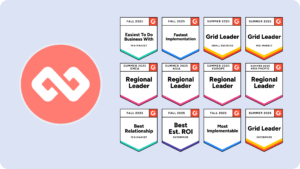As we discussed in a previous post, reflecting on your work can drastically improve your career performance. Research conducted at Harvard Business School found that “taking time to reflect on our work improves job performance in the long run” and that “learning from direct experience can be more effective if coupled with reflection”.
Now that we know how powerful reflection can be, what can we do as this year comes to a close and the next begins?
Reflecting on what you’ve learned this past year can help you more clearly see what you need to focus on in the coming year.
To help you out, here are 10 questions you need to ask yourself before the year-end. If you’re a mentee, share your answers with your mentor and get moving on your goals for next year. Likewise, if you’re a mentor, share it with your mentee and help steer them in the right direction for the year to come.

1. What are three accomplishments from this year that you’re most proud of?
Taking note of your proudest moments of the past year can help you better understand how you derive a sense of fulfillment and purpose. How did your accomplishments help move you along the path to where you want to be?
Reflection:
- Deep Dive: Reflect on not just the accomplishments themselves but also the journey that led to these moments. Consider the skills you utilized, the challenges you faced, and the efforts that made these achievements possible.
- Value Addition: Think about the impact these accomplishments had on your personal growth and career advancement. How do they align with your long-term goals, and what lessons can you draw from these successes?
Activity:
- Accomplishment Timeline: Create a detailed timeline of your top achievements throughout the year, breaking down each into key components:
- Milestones: Identify key moments of progress.
- Steps Taken: Document the actions or strategies you used to overcome challenges.
- Skills Applied: Highlight the specific skills (e.g., leadership, communication) used.
- Impact: Reflect on the broader impact of these accomplishments on your personal and professional goals.
- Reflective Journaling: After creating the timeline, deepen your reflection by journaling about each achievement. Focus on:
- Emotional Response: How did this success make you feel? Was there pride, relief, or even surprise?
- Lessons Learned: What new insights or skills did you develop?
- Growth Impact: How does this accomplishment align with your long-term vision? Has it changed your perspective or priorities?
2. Which of your strengths has been best serving you?
We are all born with certain strengths. Identifying what they are and how they serve you can better help you harness them in the future. What are some strengths you have that you like about yourself? How have they helped you move forward?
Reflection:
- In-depth Analysis: Explore your strengths in detail. Identify not only what they are but also the specific situations where they shone the brightest. Consider instances when these strengths brought success and fulfillment.
- Application Focus: Discuss how you can strategically leverage these strengths in the future. Explore new ways to use them effectively or harness them in different aspects of your life and work.
Activity:
- Strengths Inventory:
- Take an Assessment: Use tools like Gallup’s StrengthsFinder or the VIA Character Strengths Survey to identify your top strengths.Reflect on Specific Instances: Once identified, think of times when these strengths were critical to your success.
Example: If “Strategic Thinking” is one of your strengths, recall a situation where you used this skill to solve a complex problem or achieve a goal. - Action: Write down how leveraging this strength advanced your career or personal development.
- Take an Assessment: Use tools like Gallup’s StrengthsFinder or the VIA Character Strengths Survey to identify your top strengths.Reflect on Specific Instances: Once identified, think of times when these strengths were critical to your success.
- Feedback Gathering:
- Reach Out for Insight: Ask colleagues, friends, or mentors to share when they’ve seen your strengths positively impact your work or life.
- Ask Specific Questions: Prompt them to describe scenarios where your strengths made a difference.
- Follow-Up: Reflect on their feedback and compare it to your self-assessment. Are there any new strengths they recognized?
- Incorporate Feedback: Use this information to refine your self-awareness and plan how to further use your strengths in future projects.
Suggested reading: The Value In Finding And Using Your Strengths
3. Which of your weaknesses have been holding you back?
Much like strengths, we all have natural weaknesses as well. Being mindful of our blind spots can help us better prepare for them. Which of yours have been hindering you? How can you pivot to either improve them or make them work for, not against you?
Reflection:
- Self-Reflection: Delve deeper into your weaknesses and how they manifested in your experiences this year. Consider instances where these weaknesses posed challenges or hindered progress.
- Action Plan: Develop strategies to address these weaknesses. This could involve seeking training, partnering with others whose strengths complement your weaknesses, or finding alternative approaches to work around them.
Activity:
- Weaknesses Reflection Worksheet: Create a table or document listing your perceived weaknesses and their potential impact. Develop action plans beside each weakness, outlining strategies to either mitigate or address them.
| Weakness | Impact | Strategy for improvement |
| List areas where you feel you struggle (e.g., time management, communication) | Describe how each weakness affects your work or relationships. | Create strategies for improvement |
- Feedback Analysis: Request constructive feedback from colleagues or mentors regarding areas where you can improve. Reflect on this feedback and brainstorm actionable steps to overcome or manage these weaknesses.
- Gather Constructive Feedback: Reach out to colleagues or mentors for their perspective on areas where you can grow.
- Reflect and Act: Analyze the feedback alongside your self-assessment. Create a plan for improvement:
- Example: If communication is noted as a weakness, schedule practice presentations or join public speaking groups like Toastmasters to improve.
4. What were your key relationships this year?
Most often, moving forward is a team effort—it takes a lot more time and effort to try and get there by yourself. Who do you have to thank for your forward progress this year? Who helped you get over a setback or gave you the kind words or advice you needed to persevere?
Reflection:
- Relationship Assessment: Consider not just the number but the depth and quality of your key relationships. Reflect on how these relationships impacted your personal and professional development.
- Gratitude Practice: Express gratitude and appreciation to those who supported you. Consider ways to nurture and strengthen these relationships further in the upcoming year.
Activity:
- Relationship Map: Create a visual map or diagram depicting your key relationships. Include individuals who played significant roles in your personal or professional life. Reflect on the depth of these connections and how they influenced your growth.
- Gratitude Letters: Write personalized letters or emails to individuals who positively impacted you. Express your gratitude, mention specific instances where their support or guidance made a difference, and share your appreciation for their presence in your life.
5. How has your career trajectory evolved in the past year? Where do you see it going in the year to come?
To get to where you ultimately want to be in your career, you first need to identify where you need to be at various stages. This can be accomplished by seeing how your peers are progressing, or learning where someone you admire was at when they were as far into their career as you are now.
Reflection:
- Career Reflection: Review your career milestones and growth. Evaluate the skills acquired, experiences gained, and the alignment of your current position with your long-term aspirations.
- Goal Setting: Set clear, achievable goals for the upcoming year based on your reflections. Consider steps to bridge the gap between your current position and your desired career trajectory.
Activity:
- Career Reflection Board: Design a vision board or collage showcasing your career milestones, goals achieved, and aspirations. Use images, quotes, or symbols to represent where you want to be in the future.
- Goal-Setting Workshop: Host a personal goal-setting session. Break down your career aspirations into achievable short-term and long-term goals. Discuss actionable steps to bridge the gap between your current position and future aspirations.
- Break Down Career Aspirations: During a personal goal-setting session, identify both short-term (e.g., gaining a new certification) and long-term goals (e.g., transitioning into a leadership role). Prioritize the steps needed to reach each one.
- Actionable Steps: For each goal, outline specific actions you need to take. For example, if a long-term goal is a promotion, a short-term action might be enrolling in a leadership course.
- Set Timelines and Checkpoints: Assign deadlines to your goals and set up regular check-ins to assess your progress.
- SMART Goals: Ensure that your goals are Specific, Measurable, Achievable, Relevant, and Time-bound to keep yourself accountable.
- Reflect and Adjust: Periodically revisit your career vision board and goal-setting worksheet to adjust based on new opportunities or challenges that arise.
6. What were the biggest obstacles or challenges you faced?
Obstacles will always pop up in our paths, but how we overcome them can truly speak to our fortitude and dedication. What were the biggest challenges you faced this year and what did you learn from them—both about your career and yourself?
Reflection:
- Adversity Analysis: Reflect on significant challenges encountered. Assess the strategies you used to overcome these obstacles and the lessons learned from navigating through them.
- Resilience Building: Consider how these challenges contributed to your resilience and problem-solving abilities. Use these insights to prepare for future adversities.
Activity:
- Obstacle Analysis Chart: Create a chart or table detailing significant challenges encountered. Identify the strategies used to overcome them, the key lessons learned, and how these experiences contributed to your personal growth.
- Failure Redefinition Exercise: Challenge yourself to reframe failures as opportunities for growth. Reflect on a specific setback, analyze what went wrong, and outline actionable steps or changes based on the lessons learned.
7. What is the state of your financial well-being?
While money isn’t everything, ensuring your needs are met and being able to live a life you enjoy is. That’s why it’s important to keep tabs on your financial well-being, and if your career is getting you where you need—and want—to be.
Reflection:
- Financial Evaluation: Assess if your career provides financial stability that aligns with your personal needs and future goals. Does your income support your desired lifestyle, and are you saving adequately for future plans like retirement, education, or large purchases? Evaluate your salary in the context of living expenses, long-term goals, and career progression.
- Career Alignment: Reflect on whether your current career trajectory is helping you reach financial goals. If your financial situation feels unstable, it might be worth considering new opportunities, skill development, or other strategies to increase income.
- Planning Ahead: Set clear financial goals for the next year. These might include saving a certain percentage of your income, paying off debt, or investing in a specific area. Explore ways to enhance financial security, such as negotiating a raise, starting a side hustle, or building up an emergency fund.
Activity:
- Financial Health Assessment: Use a detailed spreadsheet or budgeting tools like Mint, YNAB, or Excel to track income, expenses, savings, and investments. Break down spending into categories, analyze your current savings rate, and compare it to your goals. This will help you identify areas where you may need to cut back or improve your savings efforts.
- Financial Vision Board: Get creative with a vision board that visually represents your financial aspirations. Include images or symbols that represent major financial goals, such as saving for a vacation, buying a new home, building an emergency fund, or investing in your retirement. Having a tangible representation of your goals can keep you motivated and focused throughout the year.
- Monthly Financial Check-ins: To stay on top of your financial well-being, schedule monthly check-ins where you review your budget and assess progress towards your goals. This will help you make adjustments and ensure you’re consistently on track.
8. What are your top three values? How are these serving your work life?
Identifying our values is important, as it can give us insight into what we’re ultimately working for. What would you say are your top three values in life? How are these informing your career?
Reflection:
- Value Alignment: Revisit your core values and assess how they influence your decisions and actions in your career. Reflect on whether your work aligns with these values and brings a sense of fulfillment.
- Integration Approach: Explore ways to further integrate these values into your work life. Consider projects or initiatives that resonate with your values and contribute to your overall satisfaction.
Activity:
- Values Reflection Exercise: List your top three values and reflect on how they align with your work. Write narratives or stories that demonstrate instances where these values guided your decision-making in the workplace.
- Values Alignment Workshop: Host a discussion or workshop with colleagues or friends. Share your top values and encourage others to do the same. Discuss ways to integrate these values into work projects or daily routines.
9. Are you doing work you care about?
Feeling like the work we do matters can give our work—and by extension our lives—meaning and purpose. If you truly care about the work you do, you’ll enjoy an overall sense of well-being that will spill into other areas of your life.
Feeling that your work matters brings meaning and purpose, enhancing your well-being across all areas of life. A concept from Japanese culture, ikigai, refers to finding joy and fulfillment in life by balancing what you love, what the world needs, what you are good at, and what you can be paid for. This alignment of passions, skills, and purpose can create a more meaningful work experience.
Reflection:
- Meaningful Work Assessment: Reflect on whether your job aligns with your ikigai. Does it fulfill a sense of purpose and personal growth? How does it contribute to others or the community? Evaluate whether your role strikes a balance between passion, skills, impact, and financial reward.
- Purposeful Engagement: Identify which parts of your work align with your ikigai—the sweet spot where your passion, talents, and the needs of the world converge. Explore how you can focus more on these aspects or seek opportunities that align more closely with your values.
Activity:
- Passion Mapping Activity: Create a mind map or journal entry where you explore your passions, talents, and what brings you joy. Then, reflect on how your current work fits into this map, considering how much it aligns with your ikigai. Note the areas where your job excites and fulfills you and where it may fall short.
- Role Redefinition Exercise: Consider how you can shape your current role to better align with your ikigai. Brainstorm ways to leverage your passions and skills more fully in your job. Whether through taking on projects that align more with your values or developing new skills, finding ways to integrate more of your ikigai into your work can lead to greater satisfaction.
10. What are you most grateful for this year?
Looking back, when did you feel an overwhelming sense of gratitude over the past year? This can be derived from a person, a specific experience, or an acknowledgment of something you accomplished.
Have you set your new year goals with your mentoring partner? If not, connect with them today to set up a time in the coming weeks that works best for both of you. Being able to not only reflect, but discuss your reflections and next year’s goals with someone you trust can truly bring what you want into perspective!
Reflection:
- Gratitude Exploration: Recall moments or experiences that filled you with gratitude. Reflect on how these instances positively influenced your mindset, relationships, or personal growth.
- Gratitude Practice: To cultivate a habit of gratitude by acknowledging and appreciating the people, opportunities, and experiences that enriched your life, consider ways to incorporate gratitude into your daily routine.
Activity:
- Gratitude Journal: Start a gratitude journal to regularly document moments, experiences, or individuals you’re thankful for. Reflect on the impact these instances had on your overall well-being.
- Gratitude Ritual: Establish a daily or weekly gratitude ritual. Set aside a few minutes each day to express gratitude, either through meditation, writing thank-you notes, or simply reflecting on things you’re thankful for.
So there we have it, perhaps try sharing these answers with your mentoring partner or dive into one of the many activities we recommend (there’s over 50!). Or have a read of what our own mentoring experiences have been like, with our Head of Engineering.
If you’re interested in learning more about how Mentorloop has helped over 100,000 people find meaningful relationships that have helped shape their careers, speak to a mentoring specialist today or start building your own mentoring program for your people:




